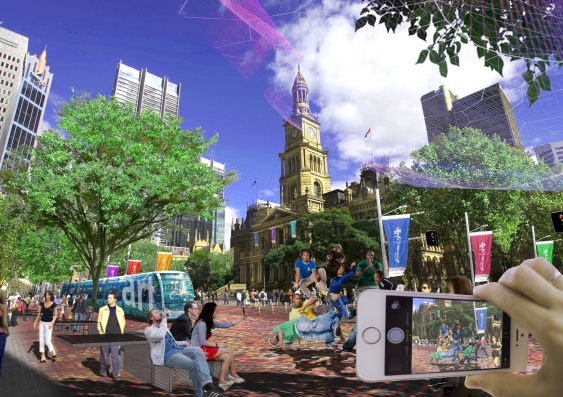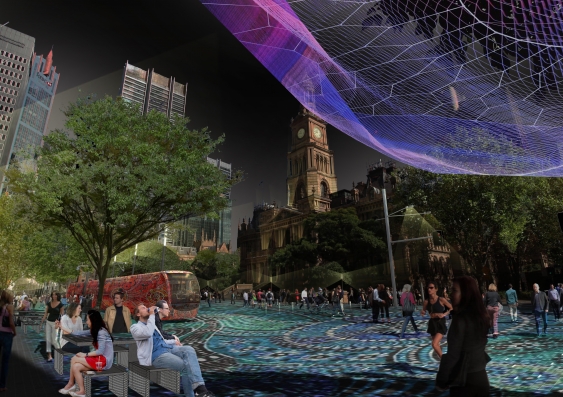Students transform Sydney’s George St into leisure space
A colourful redesign of Sydney’s George Street to focus on people, not cars, has secured two UNSW Built Environment students a finalist spot in an urban innovation competition.
A colourful redesign of Sydney’s George Street to focus on people, not cars, has secured two UNSW Built Environment students a finalist spot in an urban innovation competition.

Fran Strachan
Communications Manager Low Carbon Living CRC
+61 2 9385 5402
fran.strachan@unsw.edu.au
A colourful redesign of Sydney’s George Street to focus on people, not cars, has secured two UNSW Built Environment students a finalist spot in an urban innovation competition.
Masters of Urban Development and Design (MUDD) students Christian Vitulli and Abdul Fahim Bin Razali are one of only three design teams selected as finalists in the Global Ideas Competition George St 2020, announced by the ULI Urban Innovation Initiative at Customs House.
Teams were required to submit designs that transformed the traditionally car focussed George Street into a pedestrian thoroughfare with a people-focused infrastructure.
Vitulli and Razali’s concept Urban Street Craft is a transformative streetscape designed for the southern-most end of George Street, near the Town Hall and the Queen Victoria Building.
The students introduced functional design elements that sit flush with the paving when not in use, but can be utilised as tables, seats and surfaces when required.
“We didn’t want George Street to remain a one dimensional street,” said Vitulli and Razali. “With our design it can transform at different times of the day. On business mornings it can cater to commuters, bike riders and coffee drinkers and on weekends to markets and festivals,” the students said.

By night digital Indigenous art creates a vibrant atmosphere.
Acknowledging Sydney’s cultural diversity, the design incorporates digital art derived from Indigenous paintings that can be projected on to the facades of the surrounding buildings or installed as in-ground LED light pavers.
“We were motivated by the opportunity to create a space that would reflect the energy and unique identity of the city, through colour, patterns and technology,” said Vitulli.
The jury, which included Lucy Turnbull AO, Michelle Tabet, Marcus Westbury, John Choi, David McCracken and Simon Kilbane, said the projects grasped the challenge of ingraining an urban landscape with human identity.
“Proponents addressed the challenge by considering George Street as an activation spine, proposing a range of enabling infrastructures for people to inhabit the street more comfortably,” the jury citation read.
The students developed their design in an Advanced Urban Development and Design studio led by lecturer Scott Hawken.
“This is what the studio is all about – inspiring students to go beyond competency and become leaders in their fields,” he said.
In the next stage of the ULI Urban Innovation Competition, the finalists will be mentored by property and design specialists specifically selected to further develop their concepts.